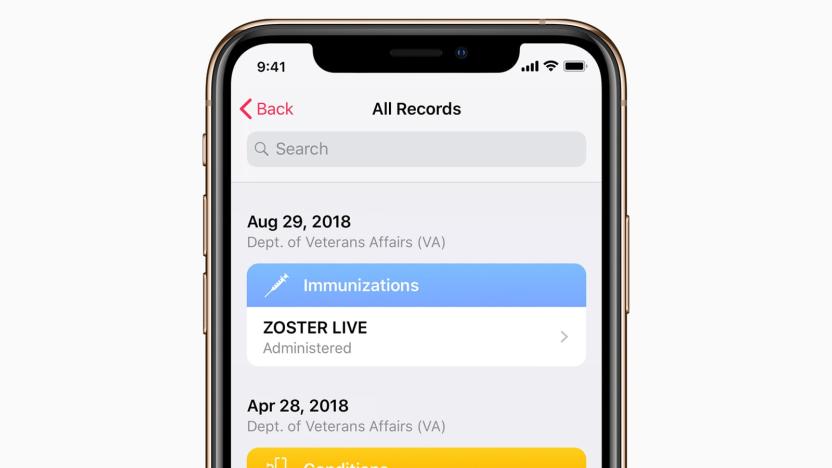VeteransAffairs
Latest

Veterans can access their medical info through Apple's Health Records
Apple is expanding its Health Records feature in iOS to cover one of the larger groups in the US: namely, veterans. The company is partnering with the Department of Veterans Affairs to make servicemen and women's medical info available in one place on their iPhones, including known conditions, prescriptions and procedures. It's the record-sharing system "of its kind" at Veterans Affairs, Apple said.

IBM extends deal using Watson to support veterans with cancer
IBM is making further use of Watson in the fight against cancer. The tech giant has extended a team-up with the US Department of Veterans Affairs that taps Watson for help treating soldiers with cancer, particularly stage 4 patients who have few other options. The new alliance runs through "at least" June 2019 and will continue the partnership's existing strategy. Oncologists and pathologists first sequence tumor DNA, and then use Watson's AI to interpret the data and spot mutations that might open up therapeutic choices.

AI will shape health care plans for US veterans
American veterans needing health care are about to get help from an unusual source: artificial intelligence. The Department of Veterans Affairs and Flow Health have forged a 5-year alliance that will see the two build a massive medical knowledge graph (based on the records of 22 million veterans) that uses deep learning to customize health plans for vets. The system aims to identify the common genetic factors that make people vulnerable to given diseases and not only improve diagnoses, but recommend treatments on a case-by-case basis.

Mind-operated robot arm helps paralyzed woman have her cup o' joe (video)
Researchers at the Braingate2 consortium have made a breakthrough that allows people with spinal cord or stroke injuries to control robotic limbs with their minds. The original project allowed subjects with motor cortex-implanted chips to move cursors on a screen with their minds, but they can now command DEKA and DLR mechanical arms to grasp foam balls and sip coffee. Researchers noted that dropped objects and missed drinks were frequent, but improved brain sensors and more practice by subjects should help. To see the power of the mind move perhaps not mountains, but good ol' java, jump to the video below.

